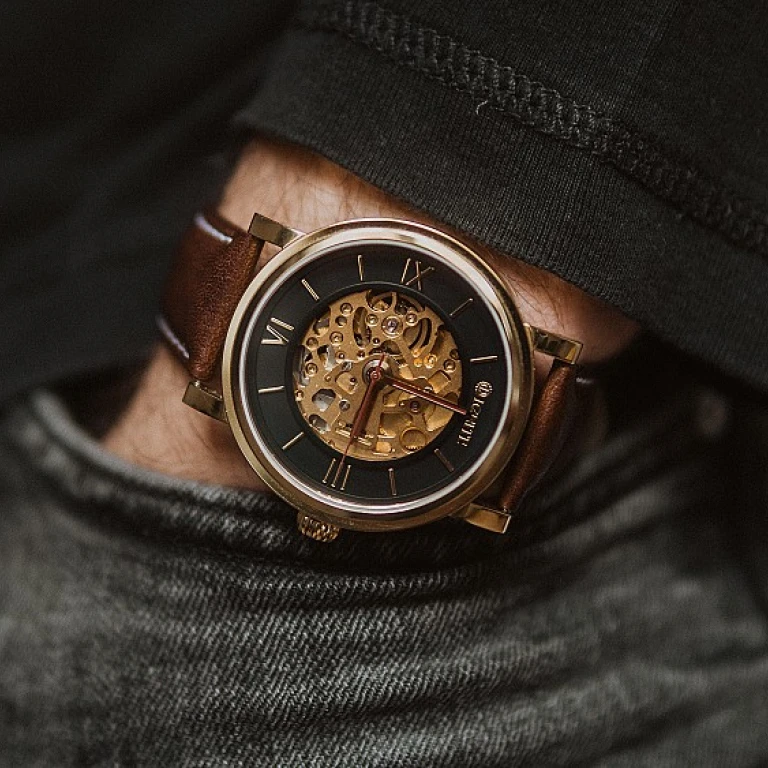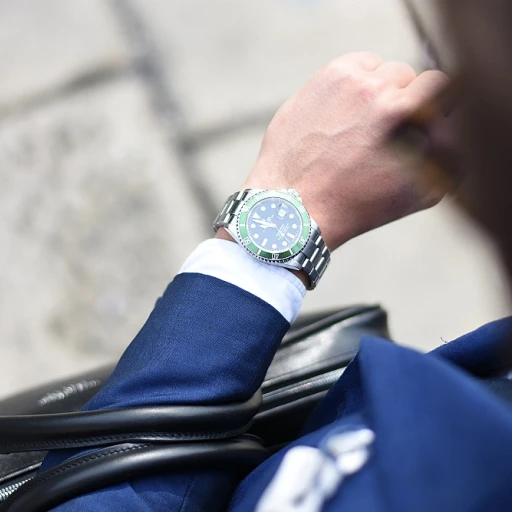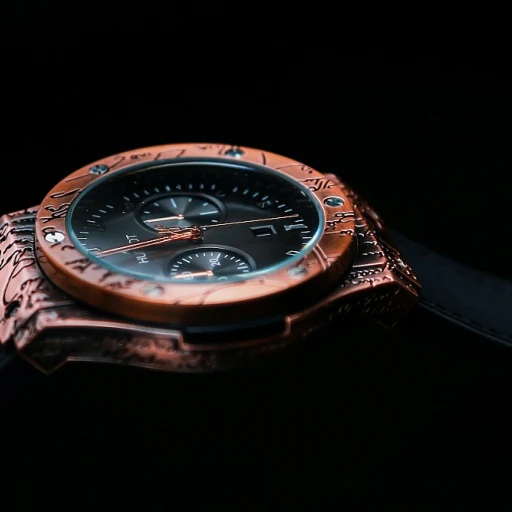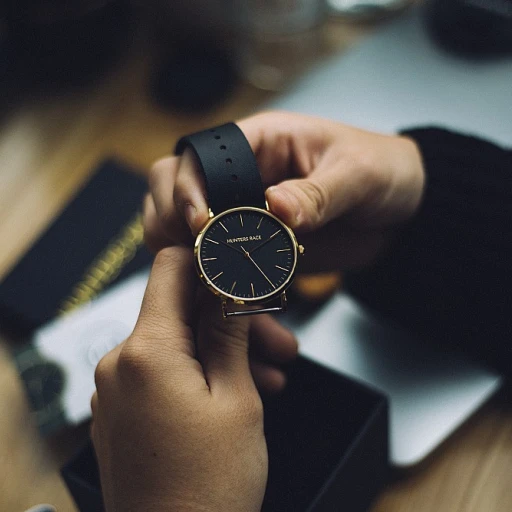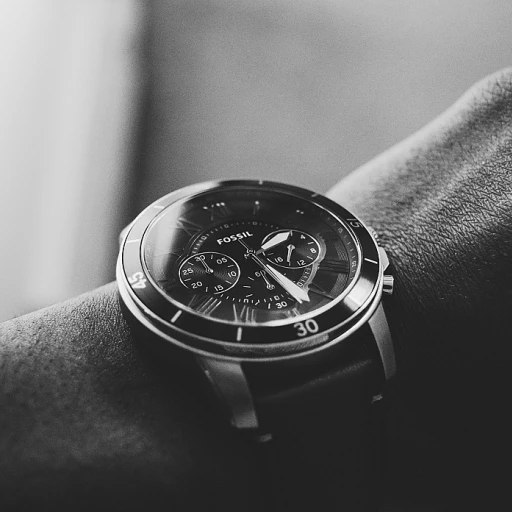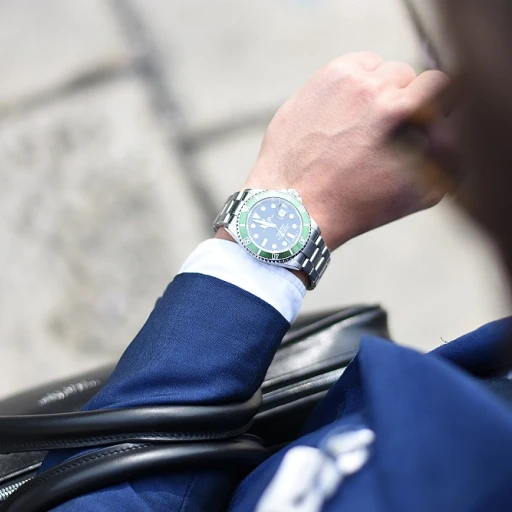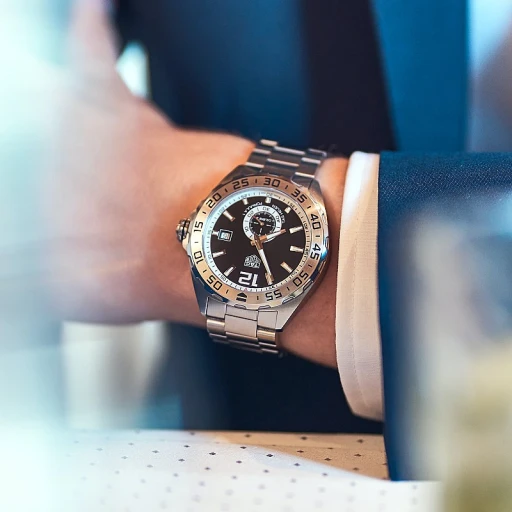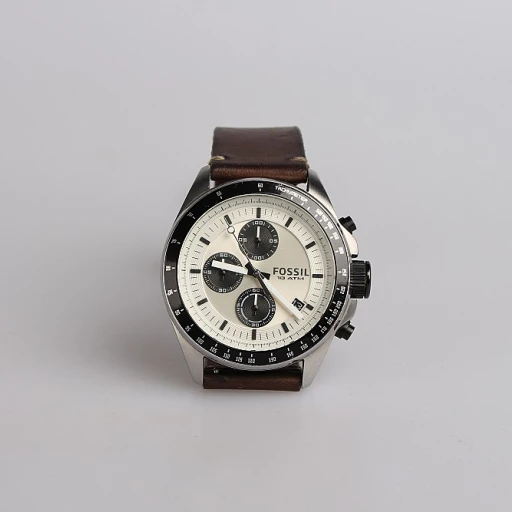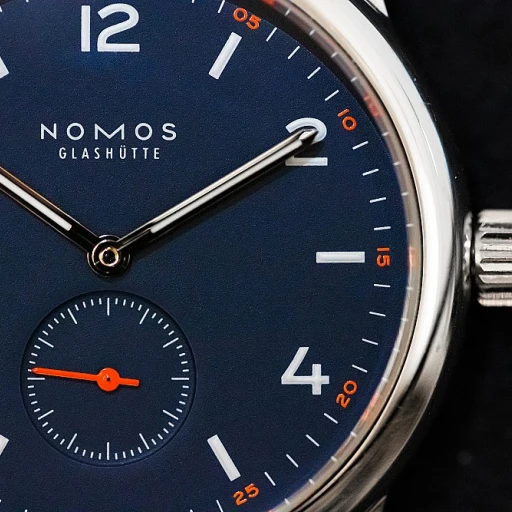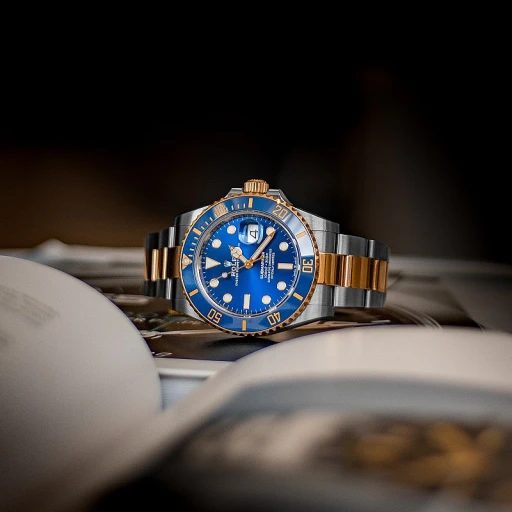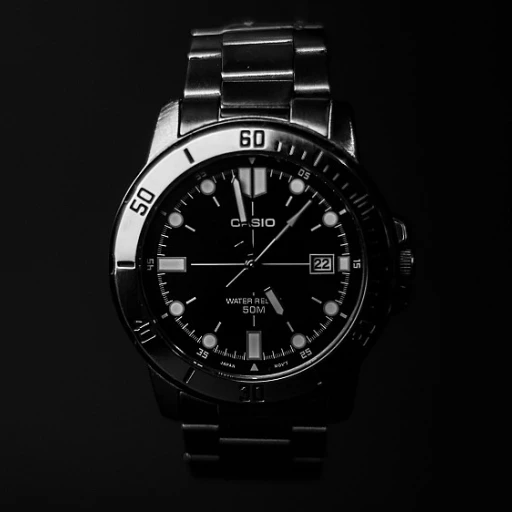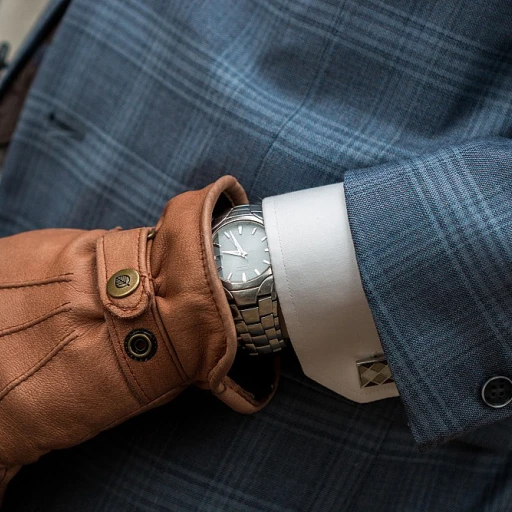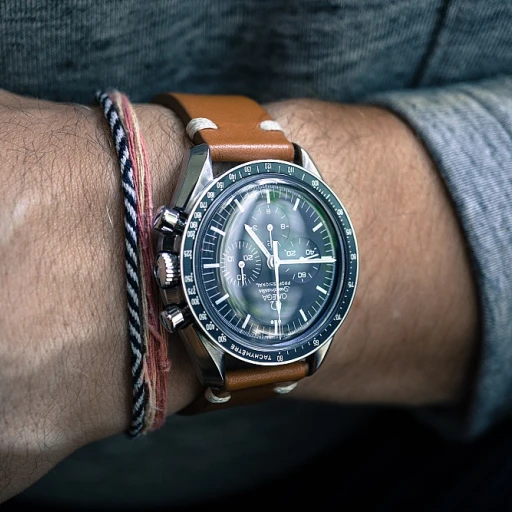
Le Tourbillon: An Ancestral Ingenuity Still Captivating in Modern Times
The Enduring Enchantment of the Tourbillon Complication
Since its inception over 200 years ago by Abraham-Louis Breguet, the tourbillon has been a symbol of watchmaking excellence and luxury watch prestige. Although originally designed to counteract the effects of gravity on pocket watch accuracy, the tourbillon's mechanical ballet continues to captivate modern aficionados' imaginations. Notably, recent statistics indicate a steady demand in the luxury watch market for timepieces featuring this intricate complication, despite advancements in wristwatch precision negating its functional necessity.
Tourbillons in the Digital Age: Aesthetic Appeal Versus Practicality
In today's digital era, where quartz and smartwatches offer unparalleled timekeeping, the tourbillon remains a testament to craftsmanship and complexity. Luxury timepiece collectors often quote the adage 'a watch tells more than just time'—it speaks to the wearer's appreciation of traditional horology. A tourbillon's allure, thus, goes beyond precision; it's a statement of art, heritage, and engineering prowess. Brands like Patek Philippe and Vacheron Constantin continue to innovate while honoring this legacy, merging the tourbillon's heritage with contemporary design and functionality.
Investing in the Mechanical Masterpiece
For those investing in luxury watches, a tourbillon represents not just a timepiece but an asset with potential appreciation over time. According to industry analytics, rare tourbillon models have seen a significant increase in value, much like vintage heirloom watches. This underlines the importance of the tourbillon in the hierarchy of collectible watches. Luxury watch enthusiasts should consider both the technical mastery and the investment savvy when contemplating a tourbillon acquisition.
An In-depth Analysis of Modern Tourbillon Timepieces
It is imperative for enthusiasts to understand the nuanced differences among modern tourbillons. The introduction of novel materials such as titanium and carbon fiber has enhanced the functionality and aesthetic of contemporary models. Manufacturers have also pushed boundaries by integrating multiple tourbillons into single movements, achieving unprecedented levels of precision and complexity. By delving into the mechanical intricacies and comparing different models, collectors and investors can make informed decision on which wristwatch marvels align with their passion for luxury, precision, and craftsmanship.
Chronometric Competitions: How Historical Trials Shaped Today's Standards
Setting the Benchmark: The Legacy of Chronometric Trials
The quest for precision in watchmaking is a tale as old as time itself, with roots entwined in the prestigious chronometric competitions of yesteryear. These trials, synonymous with the relentless pursuit of horological excellence, have laid a foundation for today's exacting standards in luxury timepieces. A noteworthy statistic that remains a testament to these competitions' legacy is the improvements they spurred: timing accuracy of marine chronometers was enhanced by an impressive 100-fold over 200 years, illustrating the impact of these trials.
Reviving the Spirit of Innovation Through Modern Contest
In an ode to this heritage, contemporary watch brands often participate in modern renditions of these contests, seeking to underpin their craftsmanship with quantifiable proof. These modern competitions are not just a nod to tradition; they push the envelope in terms of technical innovation and precision. A telling example can be found in the time-honoured Grand Prix d'Horlogerie de Genève, which celebrates horological achievements and spurs brands to new heights annually. Such accolades shine a spotlight on those who continue to redefine the standards of timekeeping precision.
The Endurance of Time: Achieving Precision Across Decades
Moreover, the longevity and lasting accuracy of a watch have become tantamount to the essence of luxury watchmaking. This lasting performance is exemplified in statistics such as the incredibly low rate of time deviation — some luxury watches today can boast a mere -2/+2 seconds deviation per day, challenging the achievements of historical timepieces. The ability of modern watches to sustain high precision over time pays homage to the metronomic consistency sought after in historical chronometry trials.
From Observatory to Wrist: The Transcendence of Chronometer Certifications
Evolution of High-Precision Timekeeping
The relentless pursuit of high-precision timekeeping has been at the heart of the luxury watch industry for centuries. In bygone eras, the performance of timepieces was rigorously tested in observatory trials, setting benchmarks for excellence. Renowned competitions saw leading brands striving for the coveted title of 'chronometer'—a testament to peerless accuracy. Statistics from vintage trials highlight this competitive spirit: brands like Rolex and Omega frequently headlined these events, each achieving numerous awards and solidifying their status in horological history.
Chronometer Certification: A Hallmark of Timepiece Prestige
Chronometer certifications once provided by observatories are now most commonly issued by the Contrôle Officiel Suisse des Chronomètres (COSC). As per a recent COSC report, only 6% of Swiss watch production is certified as chronometers. This underscores the selectivity and luxury status conferred by such certification. Specifically tailored to luxury watch enthusiasts, owning a certified chronometer signifies holding a piece of exceptional mechanical prowess—each timepiece undergoes stringent testing to earn its title.
Modern Validation: Combining Tradition with Technological Advances
Despite the advancements in technology, the historical significance of certification remains palpable in the allure of luxury watches today. Modern certification processes have evolved to incorporate new challenges and standards, yet watches like the acclaimed Rolex Oyster Perpetual and the Omega Seamaster continue to pay homage to their precise ancestors proudly bearing the chronometer title. These timepieces are manufactured in the spirit of those that once dominated observatory competitions, now boasting the integration of contemporary materials and methods.
Exclusive Insights: Pioneers of Precision Beyond the Spotlight
For the devotees of haute horlogerie, there is an enigmatic allure to the master watchmakers who operate behind the scenes, innovating and crafting with meticulous attention to detail. Discovering these lesser-known master watchmakers unveils the full narrative of the pursuit of chronometric excellence—highlighting the unsung heroes who have played a pivotal role in shaping today’s luxury watch standards. Although their names may not be as widespread, their contributions are eternally embedded in the annals of timekeeping history.
Silicon Revolution: How Modern Materials Are Redefining Watch Accuracy
The Advent of Silicon in High-End Timepieces
Revolutionizing luxury watch accuracy, silicon materials have brought forth an era of unprecedented precision and reliability. A notable player in this material revolution is Breguet, with its introduction of the Silicon Breguet overcoil balance spring. This technology has elevated luxury watches, ensuring performance and endurance. Silicon's anti-magnetic properties ensure that luxury watch movement is unaffected by electronic interference – a modern necessity. According to the Federation of the Swiss Watch Industry, silicon components have surged by 15% in high-end watches, underscoring the industry shift in recent years.
Improving Watch Longevity with High-Tech Materials
Traditionally, luxury watches have been cherished for their craftsmanship and materials like gold or platinum. However, modern advancements such as silicon parts contribute not only to the watch's accuracy but also to its longevity and maintenance. The balance wheels and escapements made of silicon are impervious to corrosion, reducing wear and tear, which enhances the lifespan of these luxurious timepieces. Statistics from watch service centers indicate a decreasing need for repairs in models featuring these advancements, showing the practical benefits of the silicon revolution.
Accuracy Propelled By Nanotechnology
As aficionados of luxury watches know, accuracy is paramount. Nanotechnology has enabled the creation of silicon components with extreme precision. In the realm of luxury timepieces, brands like Patek Philippe have taken the lead with innovations like the Spiromax® hairspring, which achieves uniformity and isochronism by virtue of its exacting design, promising deviation reduction to unbelievable levels. Leading industry reports suggest that timepieces with such innovations show a performance improvement of up to 30% over traditional hairsprings.
The Fusion of Tradition and Technology
The influx of modern materials like silicon does not negate the beauty and artistry of traditional luxury watchmaking; rather, it expands its horizons. Luxury watch enthusiasts can still admire the eloquence and detail of the intricate movements while benefiting from the advancements in accuracy and durability that silicon brings. This amalgamation of old-world charm and cutting-edge technology hooks watch connoisseurs and keeps the market vibrant, with industry sales reflecting a growing appetite for such innovative pieces.
